
There are 10 National Parks in Uganda and 12 Wildlife Reserves. Each one of them has its own character and beauty. The diversity of the National Parks in Uganda cannot be found in may other places in the world. Forests, Rivers, Lakes, Mountains and open plains all make up the National Parks in Uganda
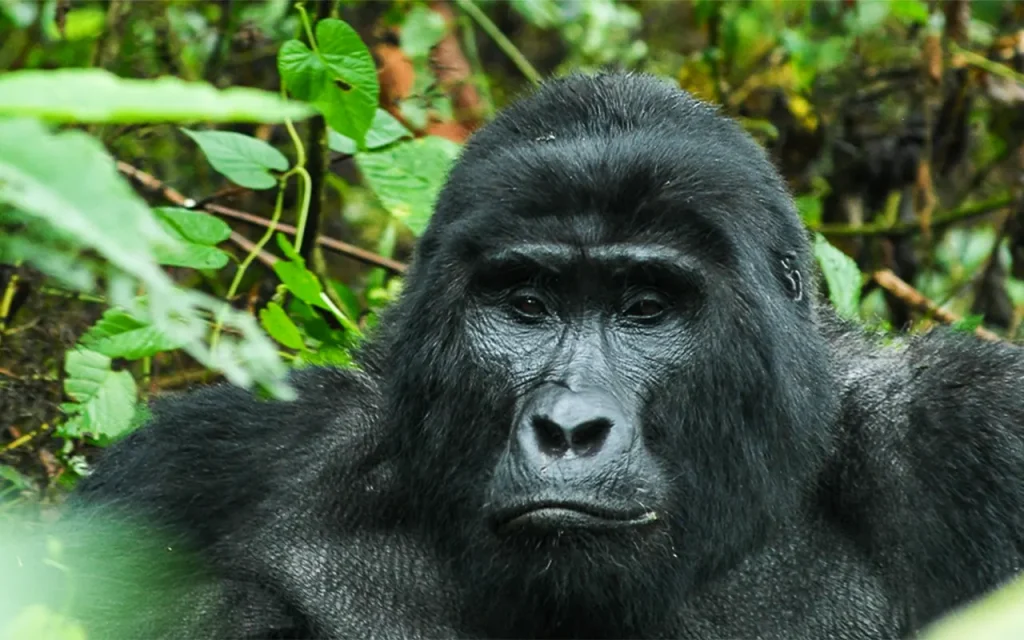
, is located in southwestern Uganda, with thick vegetation like its name suggests. Every day when tourists go out for the famous gorilla trekking adventure the ranger guides have to cut vegetation for trackers to access way to where gorillas nested the previous night. It is the true African jungle with droplets of the sun coming through the think forest cover giving you a feeling of being in paradise with zero pollution from several emissions common to our daily. Bwindi Impenetrable Forest was declared a UNESCO World Heritage site in 1994 because of its rich diversity in hosting different flora and fauna and being home to half of the worlds remaining mountain gorillas. The park covers an area of 321 km2 all of which is forested with some areas being covered by bamboo and shrubs. The forest lies on steep slippery valleys with ridges and hilltops. The weather in Bwindi is chilly because of the immerse canopy, you are advised to carry some warm clothing for evenings and long-sleeved shirts/trousers for trekking. For the ultimate experience to anyone who chooses to trek the mountain gorillas or search for birds, butterflies or shrubs, you need to be in good physical condition to go up and down the terrain. It lies at an altitude between 1160m-2607m above sea level.
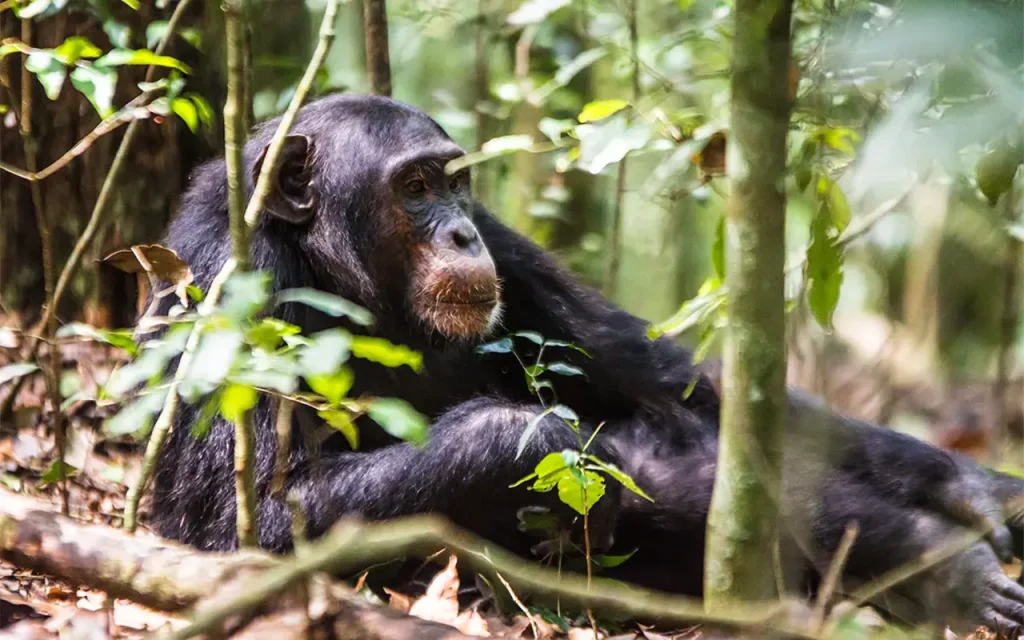
Kibale Forest National Park, together with the nearby Ngdali-Kasende Crater Lakes, are close to being an independent traveller’s dream, blessed with the tantalizing combination of inexpensive accommodation, easy access, wonderful scenery and a remarkable variety of activities. The park is highly alluring to nature lovers for the opportunity to view a wide range of forest birds and track chimpanzees (as well as viewing a wide range of other primates). Though the scenic appeal of the region remains undiminished, the rising cost of chimp tracking, and the conversion of the old budget Kanyanchu River Camp to an upmarket tented camp, mean that the national park is no longer the mandatory backpacker destination it was a few years ago. Gazetted in October 1993, the 766km squared Kibale Forest National Park extends southwards from Fort portal to form a contiguous block with the Queen Elizabeth National Park. Interspersed with patches of grassland and swamp, the dominant vegetation type is rainforest, spanning altitudes of 1,100-1,590m and with a floral composition transitional to typical eastern Afro-montane and western lowland forest.
Murchison Falls national park Protected Area (covering 3840 square kilometers) situated in the northwest, about 90 kilometers from Masindi is the biggest national park in Uganda, and is comprised of Karuma plus Bugungu Wildlife Reserves. It was named Murchison Falls after the impressive Murchison Falls on which the longest river in the world – River Nile thunderously explodes through a 7 meters gorge on the Rift Valley Escarpment and drops to 43 meters below through a series of cascades from here it becomes a calm river and its banks are crowded with giant crocodiles, buffaloes, hippos as well as waterbucks. The Murchison vegetation is comprised of woodland, Savannah grasslands plus riverine forest. Its Wildlife includes chimpanzees, tree climbing lions plus Uganda kobs, plus a variety of bird species among which are the uncommon shoebill. Murchison Falls National park which is the country’s largest park is habitat to a number of wild African savannah and divided by the great river Nile. The populations of wildlife in the park have greatly recovered from the severe poaching that happened in the 1980s; within the verdant borassus grassland just north of the River Nile you will commonly come across giraffes, elephants, buffaloes, plus a diversity of antelope species during the game drive. Rabongo Forest –found in the southeastern part of the park, is habitat to chimpanzees plus other rainforest species. The River Nile itself is habitat to one of the largest populations of hippos and crocodiles in the world, in addition to a diversity of water bird species like the most easily accessible population of the uncommon shoebill Stork in the world.
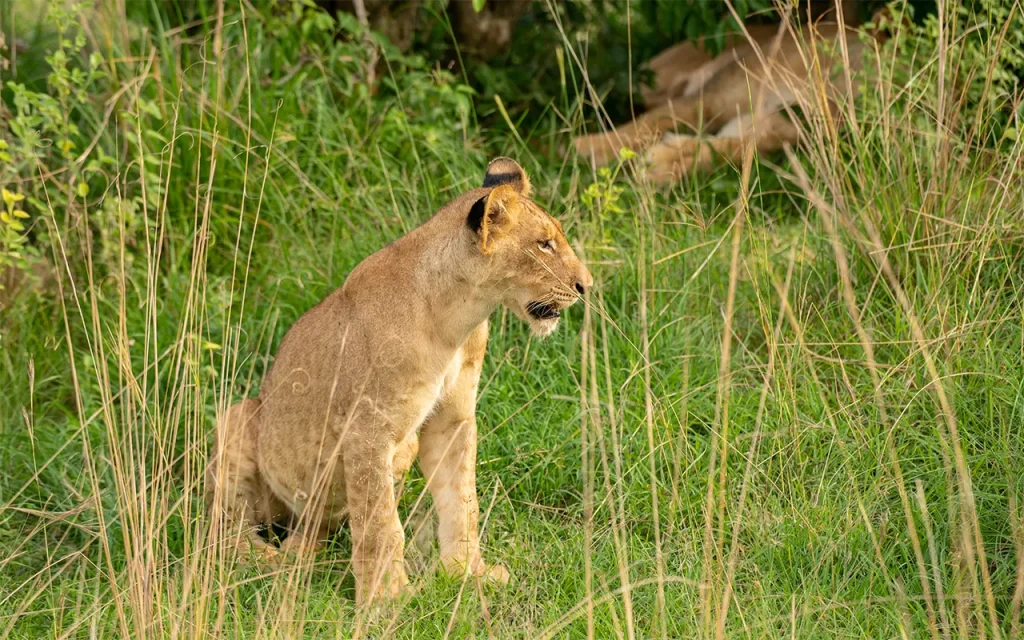
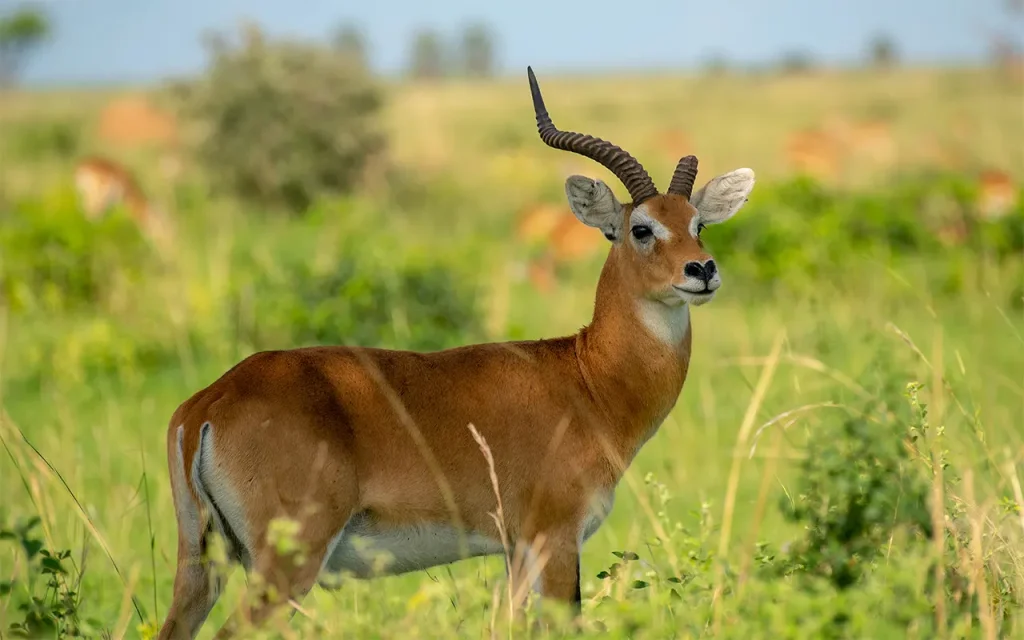
Queen Elizabeth national park is undoubtedly Uganda’s most famous national park and traveler’s destination. The presence of varied bionetwork to mention the beautiful lakes, extensive savanna, the natural forests and fertile swamps hence making it the best place the big games, ten primate species of course including chimps , 600 bird species. Situated close to mountain Rwenzori, the park’s sites include several beautiful crates lakes that winding through the rolling hills, the panoramic display of the Kazinga channel with an awesome view of the hippos, buffaloes, elephants and several bird species lined up at the shores. With a continuation towards ishasha sector plains, another surprise of tree climbing lions resting on trees waiting to pounce on the Uganda Kobs and other preys will blow one a way.Besides the remarkable wildlife attraction, Queen Elizabeth national park also boasts of attractive heritage/ culture history. There are numerous opportunities for traveler and tourists to visit the local population who are entertaining in terms of local music and cultural dances. With all such attractions queen Elizabeth national park tours leave tourists wanting for more.
Kidepo Valley National Park is arguably Uganda’s most spectacular park. The scenery of Kidepo Valley National Park ranks among Africa’s finest wildernesses is unsurpassed by any other park in Uganda and makes for exceptional game viewing. Kidepo Valley National Park was first gazetted as a game reserve in 1958 before becoming a National Park in 1962.
The park is tucked away in a remote corner in the northeast of Uganda in the semi-arid Karamoja region. Two rivers; River Kidepo and River Narus that are beautifully lined with Borassus palms dissect the park. The Narus valley receives a little more rain than the Kidepo valley and during the dry season, its remnant pools and wetlands are a beacon for all manner of game. For much of the year, the park’s wildlife flocks to the Narus Valley and can be observed at a waterhole near the Tourism Centre in Apoka. To appreciate the extent of the dry season, visitors can drive to the dry Kidepo River and walk across the 50m-wide bed of sand. But the best part about a visit to Kidepo during the dry season is how easy it is to see the animals, sometimes just by skimming the valley with binoculars, from the comfort of your room.

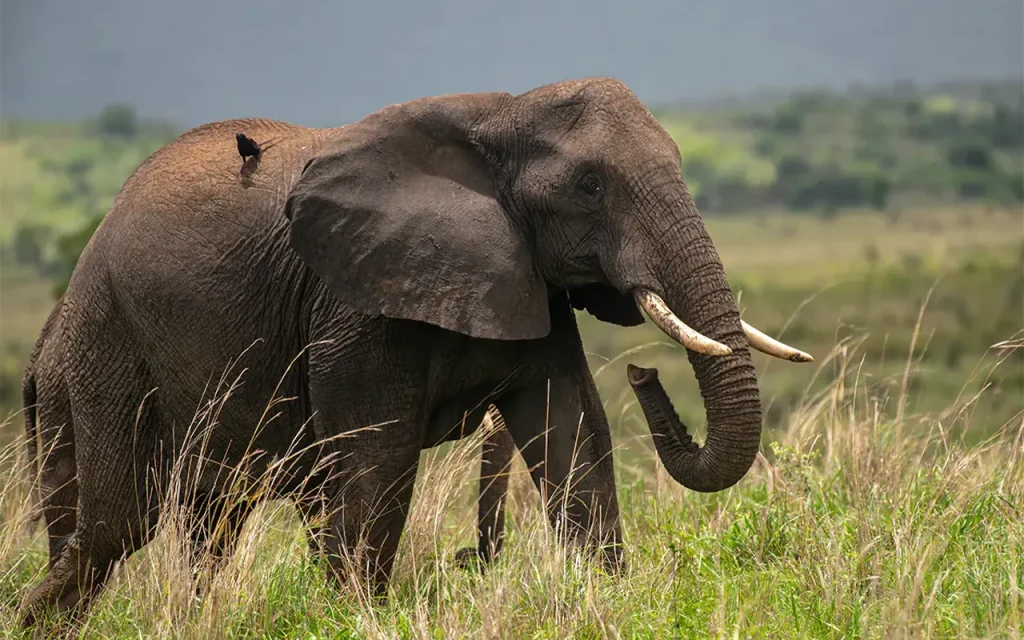
Lake Mburo National park is amazingly the closest national park to Kampala, it also doubles as the smallest national park. Situated between Masaka and Mbarara district taking approximately 4 hours’ drive time to arrive. The park covers an area of 370km² including the lakes (5 lakes). Lake Mburo is endowed with several wildlife species to mention recently translocated giraffes, buffaloes, elands, waters bucks, antelopes, zebras, oribis, topis, warthogs as you take a boat cruise on lake Mburo you will be in position to observe, hippos and crocodiles. In addition, the park also is home a wide a ray of birds amounting to 350 species some which include water birds, forest and savanna birds. Lake Mburo national park has got thrilling activities that keep its visitors always on the desire for more. Some of the most common tourism activities at Lake Mburo include; Game drive in the park, boat cruise on Lake Mburo, birding/ bird watching, Nature walks, the unique horse riding to view wildlife, fishing, cultural tours and cycling among others. Park Can be accessed in two gates, namely Sanga gate accessible when one is driving from Kampala side and Nshara gate accessible when one is coming from Mbarara side
Lake Bunyony exotic landscapes that are a magnet for local and international travelers place it on this list of top 10 destinations in Uganda. Dotted with at least 20 small islands and encircled by steep terraced hills, Bunyonyi is a magical spot. It has been a popular day trip out of Kabale for decades. Over the past few years, the lake has further gained popularity thanks to a proliferation of budget and other campsites and resorts around the small fishing village of Rutinda (also known as Kyabahinga) and nearby islands. Bunyonyi is a local name translating to “little birds,” which references the prolific weaver colonies along its shore. Larger birds are also represented by grey-crowned cranes, African harrier hawks, and various herons and egrets. Other common sightings include the levillant cuckoo, white-tailed monad, slender-billed baglafetch, cardinal woodpecker, and the African kingfisher.The lake is large and irregularly shaped with numerous islands and the surrounding hillsides, which locals have beautifully cultivated like parts of Nepal. The area is vibrant with activities like canoeing, cycling, or hiking.
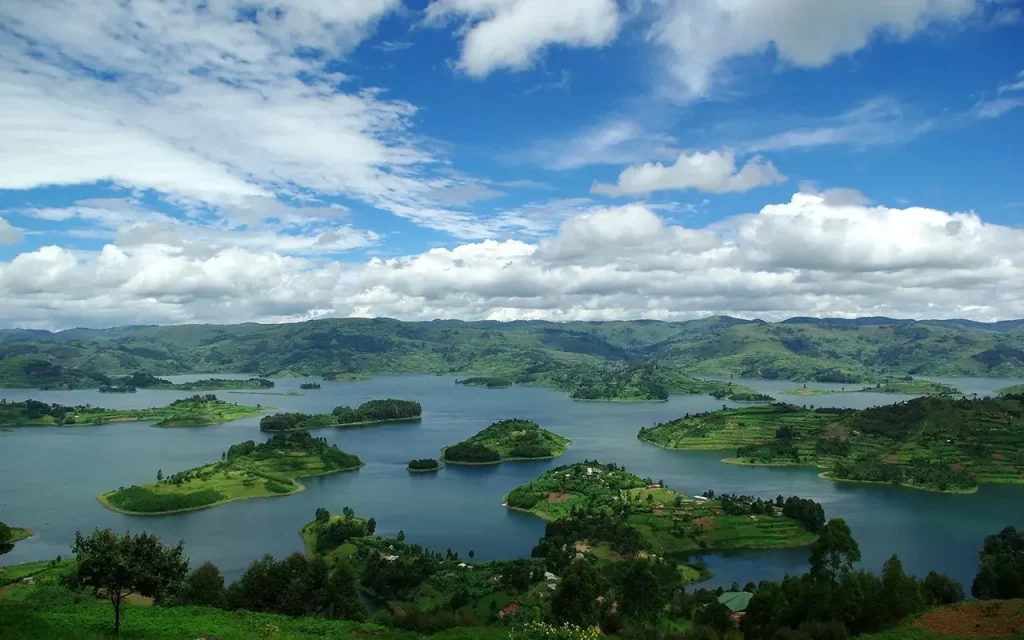

Mountain Rwenzori National Park encompasses the legendary Rwenzori mountains dubbed the mountains of the Moon, where the highest snow-peak in the country (second-highest on the continent) pervades the East African clouds. The ranges are a combination of beautiful peaks, glaciers, Valleys, Rivers, Lakes, and various species of flora and fauna, making the Rwenzori scenic. The stratified vegetation is one of the main attractions for visitors. Rwenzori Mountains National Park encompasses the legendary Rwenzori mountains dubbed the “Mountains of the Moon,” where the highest snow-peak in the country (third-highest on the continent) pervades the East African clouds. The 100,000m park is a combination of beautiful peaks, glaciers, Valleys, Rivers, Lakes, and various flora and fauna species, which make it one of Africa’s most beautiful alpine destinations. It has many natural habitats of endangered species and a rich and unusual flora comprising, among other species, the giant heather. The Rwenzori is the highest mountain range in Africa. Its loftiest peaks, Margherita (5,109m) and Alexandra (5,083m) on Mount Stanley are exceeded in altitude elsewhere in Africa only by Kilimanjaro and Mount Kenya. Both of which are extinct volcanoes standing in isolation above the surrounding plains. In addition to Mount Stanley, there are four other glacial peaks in the Rwenzori: Mount Speke (4,890m), Mount Emin (4,791m), Mount Gessi (4,715m), and Mount Luigi da Savoia (4,627m).
Mountain Elgon National Park lies in Eastern Uganda and it is that one magical safari to explore if you are to get the best of experiential African safari. It covers an area of about 1145 square kilometers and inhabits the extinct volcano-Mount Elgon one of oldest physical features in Uganda. This volcano once featured as the Africa’s highest mountain exceeding the Kilimanjaro’s current 5895 meters but due to erosion, it reduced to 4321 meters making it the 4th highest peak in East Africa and 8th in Africa. There are also 2 tribes that live around here-the Bagisu and Sabiny as well as the marginalized Ndorobos who lived deep in the forest of Benet. This volcano spans for over 4000 square kilometers thus featuring the largest volcanic base in the world. This park derived its name from the spectacular Mount Elgon which straddles at the border with Kenya. Its diameter is about 80 kilometers and stretches up to 3000 meters. A visit to this stunning park gets you the best of its unique flora and fauna including more than 300 bird species, thick montane forest, mixed bamboo belts, endemic plants for instance the giant lobelia and groundsels. The wildlife species to spot here include the black and white colobus monkeys, blue monkeys, birds like golden winged and tacazze sunbirds, Ross’s and hartlaub’s Turaco, Jackson’s Francolin, lammergeyer, crowned hornbills, black and white casqued hornbills among others.
